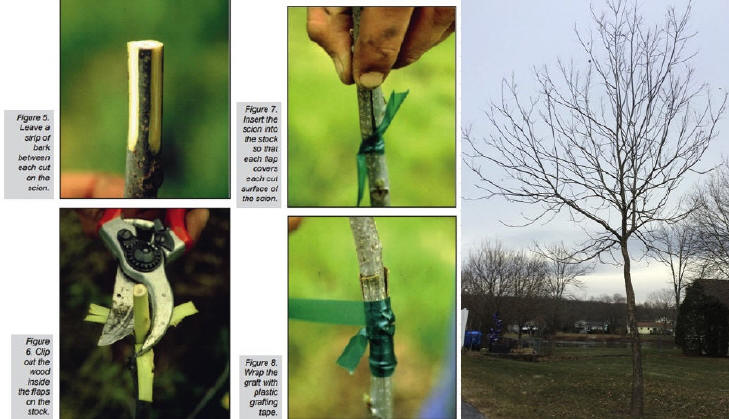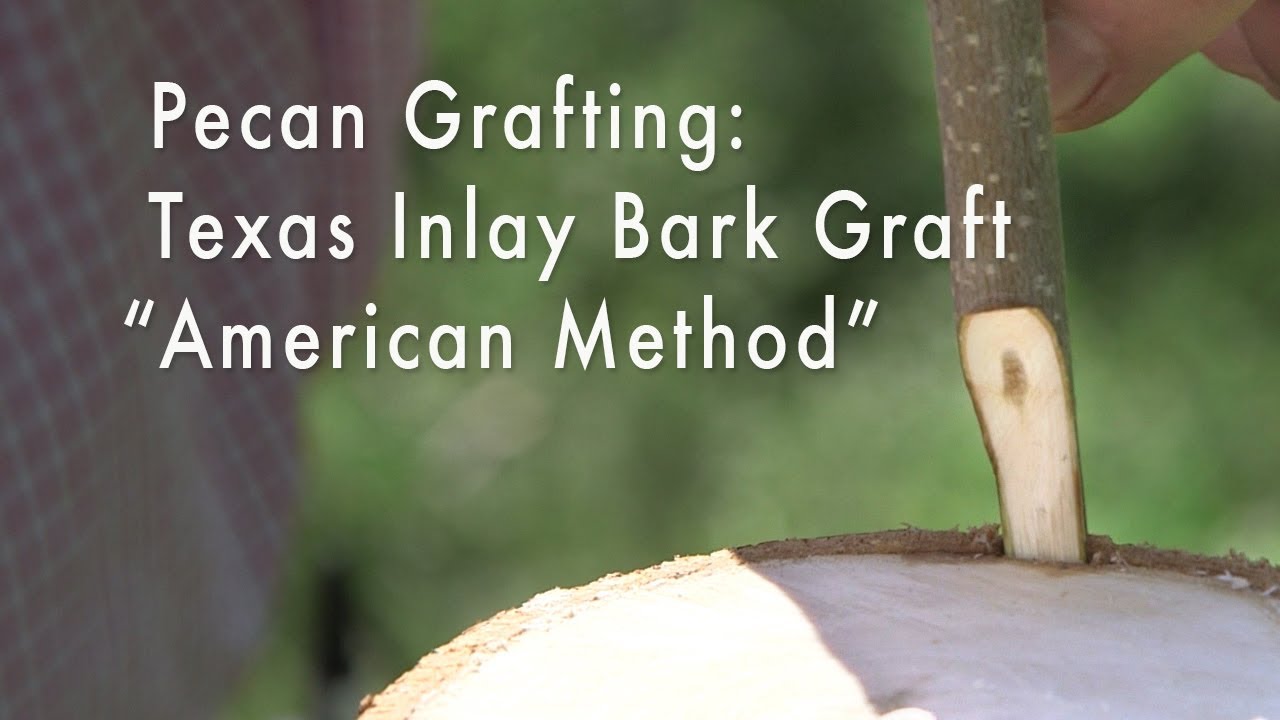To graft a pecan tree, follow these steps precisely: prepare the rootstock and scion, make a slanting cut in both, join them together, wrap with grafting tape, and keep the graft moist until it heals. Grafting is a common method used by gardeners and horticulturists to propagate pecan trees.

Credit: www.emmitsburg.net
By joining a scion, which is a piece of desired pecan variety, onto a rootstock, the resulting tree inherits the attributes of both. While grafting may seem complicated, it is a relatively simple and effective technique that can be done by anyone with proper guidance.
We will provide step-by-step instructions on how to graft a pecan tree, ensuring success and healthy new growth. So, let’s get started!
Reasons To Graft Pecan Trees
Grafting pecan trees comes with several benefits that can enhance the overall productivity and resilience of the tree.
Increases yield and quality of pecan nuts: Grafting allows you to choose a specific variety of pecan tree that yields high-quality nuts. By grafting a desired scion onto a rootstock, you can ensure the tree produces nuts of exceptional flavor and size, maximizing the harvest.
Increases resistance to diseases and pests: Certain pecan tree varieties are more resistant to diseases and pests. Grafting such scions onto existing rootstocks imparts the same resistance to the resulting tree. This helps prevent potential damage and loss caused by common pests and diseases, leading to healthier trees overall.
Creates a stronger root system: Grafted trees often develop a stronger root system compared to trees grown from seeds or cuttings. This enhanced root system allows for better nutrient uptake, improved stability, and increased tolerance to environmental stresses such as drought or harsh weather conditions.
How to Graft a Pecan Tree : Step by Step Guide
Choosing The Right Scion Wood
In grafting a pecan tree, one crucial step is choosing the right scion wood. It is important to select a healthy and disease-free scion wood to ensure the success of the grafting process. When looking for scion wood, it is also essential to search for desirable traits that you want to replicate in the grafted tree. These traits may include productivity, resistance to certain diseases, or specific nut characteristics.
Gather The Necessary Tools And Materials
Grafting a pecan tree requires gathering the necessary tools and materials. These include pruning shears, which are essential for cutting branches and ensuring a clean cut. A grafting knife is also needed to make precise cuts and prepare the scion wood. Grafting tape is crucial to hold the graft in place and secure it tightly.
Additionally, **wax or sealant** should be used to cover the cuts and protect them from moisture and disease. These tools and materials are essential for a successful grafting process, ensuring the scion and rootstock unite and grow together seamlessly. With the right tools at hand, grafting a pecan tree becomes a manageable and rewarding task.
Preparing The Rootstock
Choosing a suitable rootstock tree is the first step in grafting a pecan tree. Look for a rootstock tree that is healthy and vigorous. Consider factors such as the tree’s age, size, and overall condition. It’s important to choose a rootstock tree that is compatible with the scion you plan to graft onto it.
Once you have chosen the rootstock tree, it’s time to prepare it for grafting. Start by pruning the rootstock to the desired height. This will create a clean and strong cut surface for the grafting process. Use sharp pruning shears to make a clean cut, ensuring that the angle is smooth and even.
After pruning, make sure to remove any dead or diseased branches from the rootstock tree. This will help promote healthy growth and reduce the risk of infection. Take care to keep the pruning tools clean and sanitized to prevent the spread of any potential diseases.
By properly preparing the rootstock, you will set a solid foundation for a successful grafting process. Remember to choose a suitable rootstock tree and prune it to the desired height before moving on to the next steps of grafting a pecan tree.
Preparing The Scion Wood
To graft a pecan tree successfully, it is crucial to properly prepare the scion wood. Firstly, select a healthy and mature pecan tree from which to cut the scion wood. This wood should be trimmed to the appropriate length and shape for grafting with precision.
The scion wood plays a vital role in the grafting process as it contains the desired characteristics that you want to replicate in the new tree. Taking the time to carefully select and cut the scion wood ensures a higher chance of success for grafting the pecan tree. Remember, attention to detail at this stage sets the foundation for a successful grafting process.
Making The Graft
When grafting a pecan tree, making the graft is a crucial step. Begin by making a slanting cut on the rootstock, ensuring that it matches the cut on the scion wood. This will enable a proper connection between the two. Next, securely attach the scion wood to the rootstock using grafting tape.
Sealing The Graft
To ensure a tight seal and prevent moisture loss after grafting a pecan tree, it is important to apply wax or sealant to cover the graft union. This protective layer serves as a barrier against external influences, allowing the graft to heal properly. The wax or sealant should be evenly spread around the graft union, making sure to cover all exposed areas.
This helps to create a sealed environment that promotes successful integration of the graft. Regular inspection of the sealed area is also necessary to ensure its effectiveness and make any necessary adjustments. Remember, a properly sealed graft union helps to protect the delicate graft from drying out and increases the chances of a successful grafting process.
Watering And Mulching
Regular and consistent watering is essential for the successful grafting of a pecan tree. Adequate moisture intake promotes healthy growth and helps the tree establish its root system. It is important to provide enough water without overwatering. Apply water evenly around the tree, ensuring that the soil is moist but not soggy. This can be achieved by using a soaker hose or drip irrigation system.
Mulching around the base of the tree is another important step in the grafting process. The mulch helps retain moisture in the soil, prevents weed growth, and regulates soil temperature. Apply a layer of mulch, such as organic matter or wood chips, starting a few inches away from the trunk and extending outwards. Maintain a mulch layer of 2-4 inches deep. Regularly monitor the moisture levels in the soil and adjust watering as needed.
Pruning And Training
When grafting a pecan tree, pruning and training are crucial steps to ensure its healthy growth and optimal productivity.
One important aspect of pruning is to remove any competing branches or suckers. These are the branches that grow from the base of the tree or from areas where they may interfere with the desired growth of the graft. By removing these branches, you allow the graft to receive all the necessary nutrients and resources.
Additionally, training the tree to the desired shape and form is essential. This involves carefully guiding the growth of the tree during its early stages. By using stakes or tying branches with soft rope or fabric, you can train the tree to have a strong central leader and well-spaced lateral branches.
By following these pruning and training techniques, you can ensure a successful grafting process and a robust pecan tree that will bear fruits for years to come.
Disease And Pest Control
Monitor for signs of diseases or pests in your pecan tree regularly. Look out for symptoms such as leaf discoloration, wilting, or unusual growth. Early detection is crucial to prevent further damage. If you notice any signs, take immediate action to apply appropriate treatments. Different pests and diseases may require different treatments, so it is important to identify the specific problem before applying any remedies. Examples of common diseases and pests that can affect pecan trees include pecan scab, aphids, and pecan weevils. Use organic or chemical control methods depending on your preference and the severity of the situation. Regularly inspecting your tree and staying proactive will help you maintain a healthy pecan tree and ensure a fruitful harvest.
Frequently Asked Questions On How To Graft A Pecan Tree
When Should You Graft Pecan Trees?
Graft pecan trees during late winter or early spring for the best results.
Can Pecan Trees Be Grafted?
Yes, pecan trees can be grafted to combine desired traits and create improved varieties.
How Long Does It Take A Grafted Pecan Tree To Produce?
A grafted pecan tree typically takes around 4 to 7 years to start producing nuts.
Why Do You Graft A Pecan Tree?
Grafting a pecan tree improves its quality, yield, and ability to resist diseases and pests.
Conclusion
Grafting a pecan tree is a valuable technique that allows for the propagation of desired traits and the development of strong, healthy trees. By following the steps outlined in this blog post, you can successfully graft your own pecan tree and enjoy the benefits of a bountiful harvest.
Remember to carefully select the scion wood and rootstock, ensuring compatibility and a strong genetic foundation. Use proper grafting techniques, such as whip and tongue or cleft grafting, to encourage successful union and growth. Provide the tree with proper care, including regular watering, pruning, and protection from pests and diseases.
With time and patience, your grafted pecan tree will thrive, providing you with years of abundant pecans. So go ahead and give grafting a try – it’s an artful endeavor that will reward you with a flourishing pecan tree for years to come.

